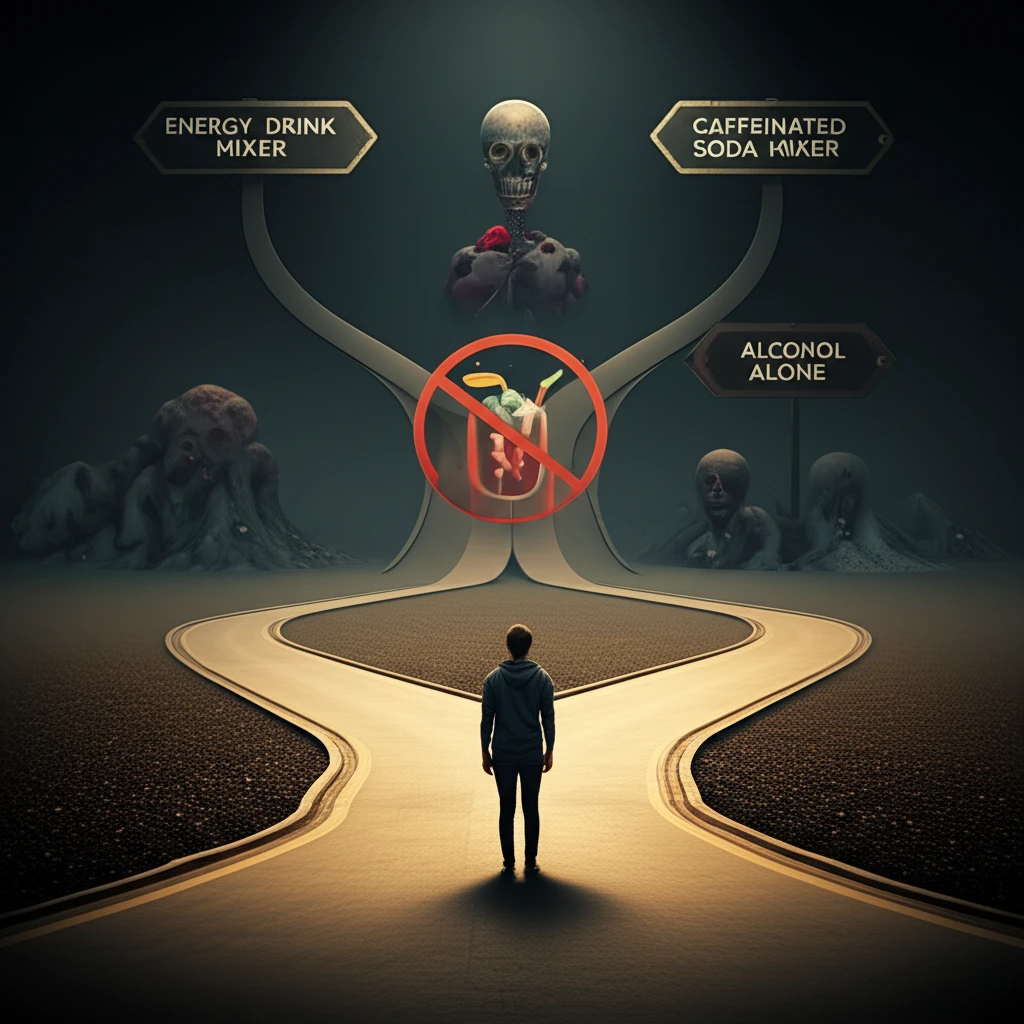
Energy Drinks vs. Caffeine Mixers: What's the Real Impact on Your Alcohol Consumption?
"New research reveals surprising insights into how energy drinks and other caffeinated beverages affect your drinking habits and health risks."
It's no secret that alcohol consumption, especially among young adults and university students, remains a significant public health issue. While recent reports suggest a decline in overall drinking, risky behaviors like binge drinking and intentionally getting drunk are still prevalent. This has led researchers to investigate factors driving excessive alcohol consumption, with the popularity of mixing alcohol with energy drinks (AMED) being a key area of focus.
Previous studies have indicated that those who mix alcohol with energy drinks tend to consume more alcohol, more often, and experience more negative consequences compared to those who drink alcohol alone. However, recent perspectives question whether energy drinks are uniquely responsible for this effect, considering that other caffeinated beverages like cola are also common mixers. The question then becomes: Are energy drinks truly different in their impact on alcohol consumption and related harms?
To investigate this further, a new study has directly compared the effects of alcohol consumption occasions involving AMED, alcohol mixed with other caffeinated mixers (AOCM), and alcohol consumed alone (AO). By examining the frequency and quantity of alcohol consumed, as well as the occurrence of negative alcohol-related consequences across these scenarios, the research aims to provide a clearer picture of the specific role energy drinks play in influencing drinking behaviors.
Energy Drinks vs. Other Mixers: Unpacking the Consumption Data

The study, which involved a UK-wide online survey of students, collected data on drinking habits and negative consequences experienced during different alcohol consumption scenarios: alcohol alone (AO), alcohol mixed with energy drinks (AMED), and alcohol mixed with other caffeinated mixers (AOCM). The researchers analyzed the data from 250 participants who reported engaging in all three drinking patterns. This within-subjects approach allowed for a direct comparison of how each mixer type influenced individual drinking behaviors and consequences.
- Fewer Heavy Drinking Days: When consuming AMED, students reported significantly fewer days consuming five or more alcohol drinks.
- Less Mixing Overall: They also had fewer days mixing drinks in general.
- Reduced Instances of Drunkenness: Participants experienced fewer days of feeling drunk when consuming AMED compared to AOCM.
- Consequences: Importantly, the number of reported negative alcohol-related consequences did not significantly differ between AMED and AOCM occasions.
Rethinking the Role of Energy Drinks in Alcohol Consumption
These results challenge earlier claims suggesting that energy drinks uniquely drive excessive alcohol consumption. In fact, the study indicates that heavy alcohol consumption occurs significantly less often on AMED occasions compared to AOCM occasions. The greatest overall alcohol consumption and associated negative consequences were clearly linked to occasions where alcohol was consumed alone.
The similarity in negative consequences between AMED and AOCM drinking occasions suggests that energy drinks are comparable to other caffeinated mixers in this regard. This highlights the need to avoid singling out energy drinks as the primary culprit in promoting risky drinking behaviors.
Ultimately, the research underscores the complexity of factors influencing alcohol consumption and its consequences. While the study provides valuable insights into the role of different mixers, it also calls for further investigation into the underlying biological, social, personal, and economic reasons that shape individual drinking patterns.
